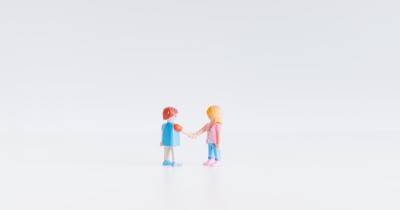
With increased globalization and digitalization, the marketplace for your products is more competitive than ever before.
Businesses not only need to work to find their target audiences, they must find unique ways to stake out their niche among thousands of other competitors.
One of the best ways to do this is to be aware of your product competition.
In this post, we'll break down the basics of product competition.
What is product competition?
Product competition is whenever one product is directly competing with another product to fill a particular consumer need. For instance, if two products both solve a consumer's need to cook steak, then these are product competitors.
It's important to note that product competition doesn't necessarily mean that the two products have anything else in common. An oven, grill, sous vide, and frying pan could all be considered product competitors, even though the price, features, form, and function of each vary drastically.
3 levels of product competition
There are, generally speaking, three ways that a business can engage in product competition. By using one of these approaches, a brand can improve its odds of beating out its competitors or at the very least finding its place among the top tier of them.
1. Ship a breakthrough product
The first and most challenging way to succeed in product competition is to launch a breakthrough product.
This means offering a product so radical that it can define its own niche.
You will nearly always see this sort of product in tech these days, though it can happen in other industries. McDonald's, for instance, offered a breakthrough product in the restaurant industry and as a result, is synonymous with "fast food." The same goes for Apple with the iPhone and Google with Google Search.

2. Create an improved product
Your business can also succeed in product competition with an improved or iterative product. These are products that add something to a preexisting product yet remain unique to your brand and brand recognition. For instance, introduce a smartphone with a foldable screen or a collapsible water bottle.
Improved products are more predictable than breakthrough products and provide more flexibility. You may start with a product that doesn't differ much from the competing product it's iterating on, but as you continue to improve on it over time, you might establish a unique niche for it that stands on its own.
You can look at Windows and macOS computers in this way. Both started in a very similar position, but over the years have found ways to stand apart and establish separate customer bases.
3. Me Too products
The simplest and most reliable way to compete with product competitors is with a "Me Too" product. These are products that are in many respects indistinguishable from their competitors, except that they are far more affordable.
These are products that are often referred to as "off-brand" or "private label" products. While this is usually a good way to penetrate the market, these products are rarely innovative and typically have little to no R&D budget.
What are indirect product competitors?
Indirect competition is similar to product competition in that it's between two products for the same customer. The difference, however, is that indirect competitors have a harder time taking one another's customers.
For example, two competing brands of candles will have to work hard to distinguish themselves as superior in the eyes of the consumer. It will come down to their scents, appearances, and materials in their product competition.
Manufacturers of matchsticks and lighters, on the other hand, are also indirect competitors. Consumers will choose one or the other based on preferences and habits, and less so because of a perceived value difference. They're competing indirectly, because both solve a similar need but in ways that don't cross over in the consumer's purchasing habits.

How can smart, connected products put you ahead of the competition?
You can be far, far more efficient
Smart products have been gaining traction with consumers and manufacturers alike for several reasons. One of the key reasons is that these products tend to be more efficient. They bring in more data, embrace algorithms, and can use energy more efficiently than their predecessors.
Embrace automation on a new scale
Connected products are also more prepared to embrace automation. They have built-in processors, can pair remotely with smartphone apps where automations can be specified, and can take advantage of smart home platforms like HomeKit.
Improve your after-sale services
Businesses can also provide better after-sale services with smart products by interacting with them remotely. You can predict when a product will need maintenance and notify the customer, troubleshoot problems more accurately, and more.
How your USP can help you stand out
Getting your product seen by the right people can be tricky, especially in a crowded marketplace. Identifying a product’s unique selling proposition (USP) can help attract your target audience by offering something your competitors cannot.
To identify a product’s USP, you need to answer the following questions:
Who are we targeting?
What customer problem does our brand, product, or service solve?
What do we do better than any other players in this space?
Is there anything we do that our competitors don’t, or can’t, only claim to do?
Why should our customers care about these differences — what’s in it for them?
What is the emotional hook behind our functional benefits or features?
With these questions, you’re looking at how your product will impact your target audience. This is separate from your product vision. The product vision will set an internal agenda that lays out the product goals, while the USP is customer-focused and is communicated through branded messaging.
TIP: Once you know the product’s USP, you can use that to influence marketing decisions and elevate your product above the competition.
How product managers can actively monitor their competitors
Competitor analysis helps you keep track of what other companies are doing in relation to your efforts. This knowledge will guide your decision-making and strategy to ensure you stay on top. Let's take it step by step,
What are the key components of competitor analysis?
Identifying competitors: The first step is to see who else is operating in your market. Make sure not to underestimate smaller businesses, they might become the next big thing!
SWOT analysis: Identifying strengths, weaknesses, opportunities, and threats for your competitors helps you to see how your business will compare.
Market positioning: If you’re coming into a new sector, it’s good practice to see who the big names are. This will help you focus your efforts on one-upping what they can offer to attract new customers.
Customer analysis: Offering something your competitors can’t requires a deep understanding of your target audience. Make sure to research your ideal customers as well as looking at competitor companies.
Once competitor analysis is done, you need to continue monitoring the competitive landscape. You can avoid falling behind by tracking what your competitors are doing.
What should I monitor about my product competitors?
Product releases: Tracking new product releases is crucial to ensure your product offering remains relevant. You should check if your company can still compete with every new release your competitors make.
Pricing strategies: Pricing is a key factor in competition. It’s not about who can price their product the lowest, it’s about remaining competitive and reacting to the market. Pay close attention to your competitors' pricing to avoid losing customers looking to cut costs.
Tip: Check our our guide on how to set the price of a product.
Marketing campaigns: Personalized marketing campaigns are becoming increasingly common. They’re highly effective when it comes to enticing your target audience. Keep an eye on your competitors' campaigns to see what they’re doing differently and if it’s working. This includes social media presence, which has become an essential marketing tool. On some social media outlets, you can even automate most of the processes, for example, using LinkedIn automation tools can streamline your efforts by automating tasks such as outreach and engagement, making it easier to monitor and analyze your competitors' strategies.
airfocus can help you develop a strategy for product competition success
Here at airfocus, we offer a variety of tools and services for product-centric businesses. To learn more about our product offerings and the opportunities for your business, check out the blog — it’s jam-packed with juicy product insights and guidance!
For a deeper dive and actionable tips on product strategy, check out our Product Strategy e-Book.

Tomas Prochazka

Read also





Create effective product strategy

Experience the new way of doing product management



